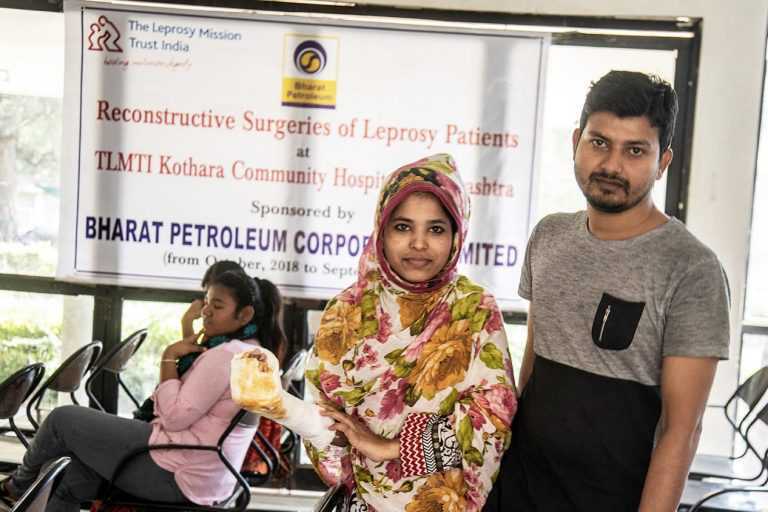Last Updated on February 24, 2023 by Shabnam Sengupta
According to the World Health Organization (WHO), a number of states and union territories in India have a high number of leprosy patients. There are about 4.56 cases of leprosy per 10,000 people annually. There were about 58 percent cases of multibacillary (a classification of leprosy), 39 percent cases among women and 5.8 percent cases among children below 14 years out of the new cases diagnosed in 2021. It seems that the rise in leprosy cases is due to lack of awareness among people.
World Leprosy Day is observed on the last Sunday of January every year. The theme this year was “Act Now. End Leprosy”. According to WHO, this year’s theme focused on three messages, i.e., elimination is possible, act now, and reach the unreached.
The danger of limb deformity
The Leprosy Mission Trust of India works on spreading awareness about the disease and shattering myths around it. The organisation spoke about Seema, a member of a shepherd community in Amravati, Maharashtra. When her mother took animals for grazing, Seema used to accompany her. One day, her mother noticed some spots on the cheeks, legs and hip of nine-year-old Seema. Seema was not feeling any pain, even when her right hand touched a hot griddle while working in the kitchen. Her mother then took her to a doctor in the village, who treated her for almost a year.

Despite the treatment, Seema’s right hand got deformed. She then took assistance from an NGO to complete her studies and underwent a hand surgery after marriage.
Challenging Disability
Pankaj Kumar Srivastava from Prayagraj, Uttar Pradesh, suffered physically and mentally after contracting the disease. He now runs a campaign against it. Pankaj informed that by the time he was diagnosed, it was too late. His body used to stink. He stopped feeling pain, and he couldn’t even fully close his eyes.
Pankaj said that his friends started avoiding him because of this disease. He eventually lost his right leg as the infection of leprosy wounds spread all over his leg. But the campaign had a positive impact on Srivastava. But this ordeal made him empathetic towards the suffering of people and concerns about the state of healthcare. It encouraged him to establish an organisation dedicated towards creating awareness about leprosy. He formed this body in February 2017 along with 12 others.
Things you should know about leprosy
Leprosy, also known as Hansen’s Disease after Doctor Gerhard Henrik Armauer Hansen, is an infection caused by Mycobacterium laprae and Mycobacterium lepromatosis. It mainly affects eyes, skin, peripheral nerves and mucosa of the upper respiratory tract. Symptoms of leprosy include light patches on skin, which loses its sensitivity in the initial stage. If not treated early, it can lead to weakening of muscles in limbs, face and eyes or even paralysis. Leprosy can also cause blindness, and ulcer in the sole of the foot.
Leprosy can be treated, and treatment at an early stage can prevent physical disability caused by leprosy. However, there should be awareness about the disease for early treatment. People fall prey to this disease due to the lack of knowledge about it. There are many organisations and NGOs that are working tirelessly to raise public awareness about the disease and to ensure the people get proper treatment.
Key points to remember:
- Leprosy can be treated by multi-drug therapy (MDT), which is available free of cost. If a patient doesn’t get timely treatment, it can lead to complications.
- Human beings have been dealing with leprosy for about 4000 years. The WHO has set a goal to eradicate leprosy from 120 countries by 2030.
- In the pre-Covid-19 period, there were nearly 200,000 cases of leprosy every year. During the pandemic, leprosy-awareness campaigns decreased by around 30 percent because of disruptions. This forced lakhs of people suffering from the disease into a life of disability and pain.
It is important to remember that if a person remains in physical contact with an unattended leprosy patient for a long period, they have the risk of getting affected as well. This is because leprosy spreads fast, mainly through the nose and mouth. A lot of times, the symptoms take a long time to appear, in some cases decades. Therefore, it is even more important to take precautions to prevent the infection. We can become a generation that can stop the transmission of leprosy, but we have to take initiative to be aware and spread the awareness about leprosy.
Disclaimer: Medical Science is an ever evolving field. We strive to keep this page updated. In case you notice any discrepancy in the content, please inform us at [email protected]. You can futher read our Correction Policy here. Never disregard professional medical advice or delay seeking medical treatment because of something you have read on or accessed through this website or it's social media channels. Read our Full Disclaimer Here for further information.

